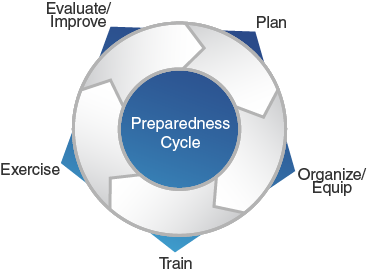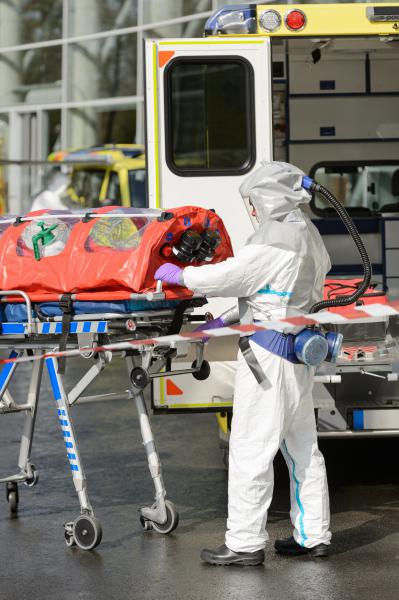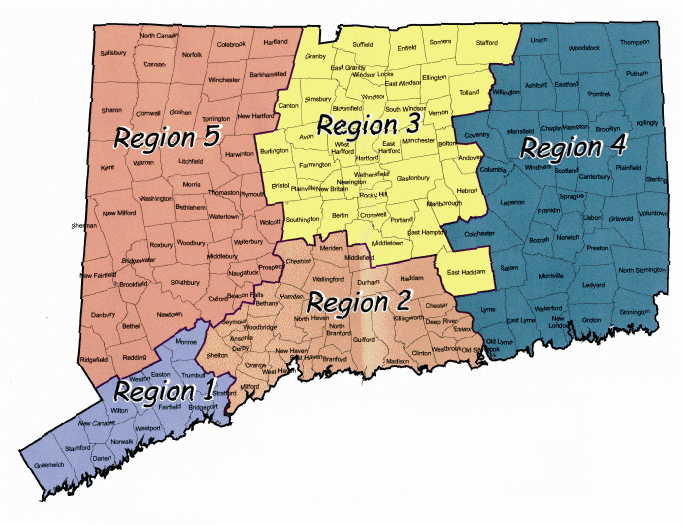Emergency Preparedness
Emergency preparedness is the capacity of the public health and health care systems, communities, and individuals to prevent, protect against, quickly respond to, and recover from public health emergencies, particularly those whose scale, timing, or unpredictability threatens to overwhelm routine capabilities. Such public health threats can include weather-related disasters, bioterrorism, chemical and radiation emergencies, and infectious disease outbreaks, such as pandemics.
Planning
To properly plan for a public health emergency requires a continuous cycle of planning, organizing, training, equipping, exercising, evaluating, and taking corrective action in an effort to ensure effective coordination during incident response. This “preparedness cycle” is pictured below.

Elements of the Preparedness Cycle
Each of the elements of the preparedness cycle are discussed briefly below but are described more thoroughly at the website of the Federal Emergency Management Agency (FEMA).
Plan
Strategic and operational planning establishes priorities, identifies expected levels of performance and capability requirements, provides the standard for assessing capabilities, helps stakeholders learn their roles, and ensures that contingencies are in place for delivering the capability during a large-scale disaster.
Organize and Equip
Organizing and equipping provide the human and technical capital stock necessary to build capabilities and address modernization and sustainability requirements.
Train
Training provides public health professionals, first responders, security officials, emergency management officials, private and non-governmental partners, and other personnel with the knowledge, skills, and abilities needed to perform key tasks required by specific capabilities.
Exercise
Exercises assess and validate the speed, effectiveness and efficiency of capabilities, and test the adequacy of policies, plans, procedures, and protocols in a risk-free environment. Aside from actual events, they provide the best means of evaluating capabilities.
Evaluate and Improve
Organizations develop improvement plans and track corrective actions to address the capabilities identified in plans and tested in exercises or real events. Using this data to reassess and revise plans and protocols contributes to the beginning of the next Preparedness Cycle by ensuring that updated strategies and plans can be used to inform new preparedness-building activities.
Connecticut Emergency Preparedness Infrastructure
The Division of Emergency Management & Homeland Security (DEMHS) of Connecticut’s Department of Emergency Services and Public Protection (DESPP) organizes Connecticut into 5 planning and preparedness regions. Each DEMHS region is under the direction of a regional office. The regional offices serve as a single direct point of contact for the jurisdiction they serve on all administrative and emergency matters. Regional partners include public health professionals, health care professionals, first responders and municipal officials.
Connecticut’s Department of Public Health also divides Connecticut into 41 Mass Dispensing Areas(MDAs). Each region is intended to run clinics that can quickly provide oral medications or vaccines to Connecticut residents during a public health emergency. For example, in the event of a smallpox outbreak, the state’s entire population of over 3.4 million residents could be vaccinated over a ten-day period at various Points of Distribution (PODs) within each MDA. PODs have been established based on an ability to serve a population of 50,000 each.
The Role of Local Heath Departments
Local health departments work together with other agencies to plan coordinated local responses to public health emergencies. For each municipality, Local Public Health Preparedness and Response Plans are developed to address roles and responsibilities of public health in cooperation with local municipal officials, emergency responders, and town agencies as well as regional and state resources.
Local health department activities may include:
Developing a local Health Alert Network (HAN), which when used during an emergency would allow rapid dissemination of important health information to area physicians, town officials, first responders, and other health providers;
Ensuring appropriate disease surveillance, which involves monitoring the spread of disease to predict, observe, and minimize the harm cause in pandemic other emergent situations;
Issuing orders to isolate (applies to persons who are known to be ill with a contagious disease) and quarantine (applies to persons who have been exposed to a contagious disease but who may or may not have become ill) individuals or populations as necessary to protect the public’s health; and
Coordinating mass vaccination and dispensing clinics to rapidly provide vaccines or oral medications to healthy populations in a short period of time to prevent or reduce the effects of smallpox, anthrax, pandemic influenza, or other potential threats to life.
CADH’s Role
CADH works to enhance the readiness of local health departments in Connecticut to respond to public health emergencies through regional planning activities, assisting individual local health departments with planning processes, and providing guidance to local public officials on the National Association of County and City Health Official’s(NACCHO’s) Project Public Health Ready Initiative.
Resources
Access the links below for some additional resources on emergency preparedness resources.
Centers for Disease Control and Prevention (CDC)
CDC’s Emergency Preparedness and Response website is CDC’s primary source of information and resources for preparing for and responding to public health emergencies.
National Association of City and County Health Officials (NACCHO)
NACCHO’s Public Health Preparedness Program creates new tools and improves existing ones to help local health departments enhance their readiness to respond to public health emergencies and other disasters. NACCHO’s Advance Practice Centers (APC) Program is a network of local health departments that develop resources and training on topics such as biosurveillance, risk communications, countermeasure distributions in the event of a public health emergency.
The Homeland Security Exercise and Evaluation Program (HSEEP)
HSEEP, maintained by the Federal Emergency Management Agency’s (FEMA’s) National Parepardness Directorate of the Department of Homeland Security, provides standardized methodology and terminology for designing, developing, conduct, and evaluating exercises related to potential emergencies, as well as improvement planning. HSEEP constitutes a national standard for all exercises.
Community Emergency Response Team (CERT)
The CERT Program educates members how to assist others in their neighborhood or workplace following a disaster when professional responders are not immediately available to help. CERT members are also encouraged to support emergency response agencies by taking a more active role in emergency preparedness projects in their communities.
Medical Reserve Corps (MRC)
The MRC is comprised of organized medical and public health professionals who serve as volunteers to respond to natural disasters and emergencies.
Connecticut Department of Public Health (DPH)
Public health preparedness and response activities within DPH include providing direction, coordination and assessment of all activities that ensure state and local readiness, interagency collaboration and preparedness for potential public health emergencies, such as bioterrorism.
Division of Emergency Management and Homeland Security (DEMHS) of Connecticut’s Department of Emergency Services and Public Protection
DEMHS directs and coordinates resources to protect Connecticut residents in the event of a disaster or crisis, through a collaborative program of prevention, planning, preparedness, response, recovery, and public education.
CADH
The Connecticut Association of Directors of Health

